Colombia 3: Crossing the Tatacoa Desert
"~Ibagué to Neiva"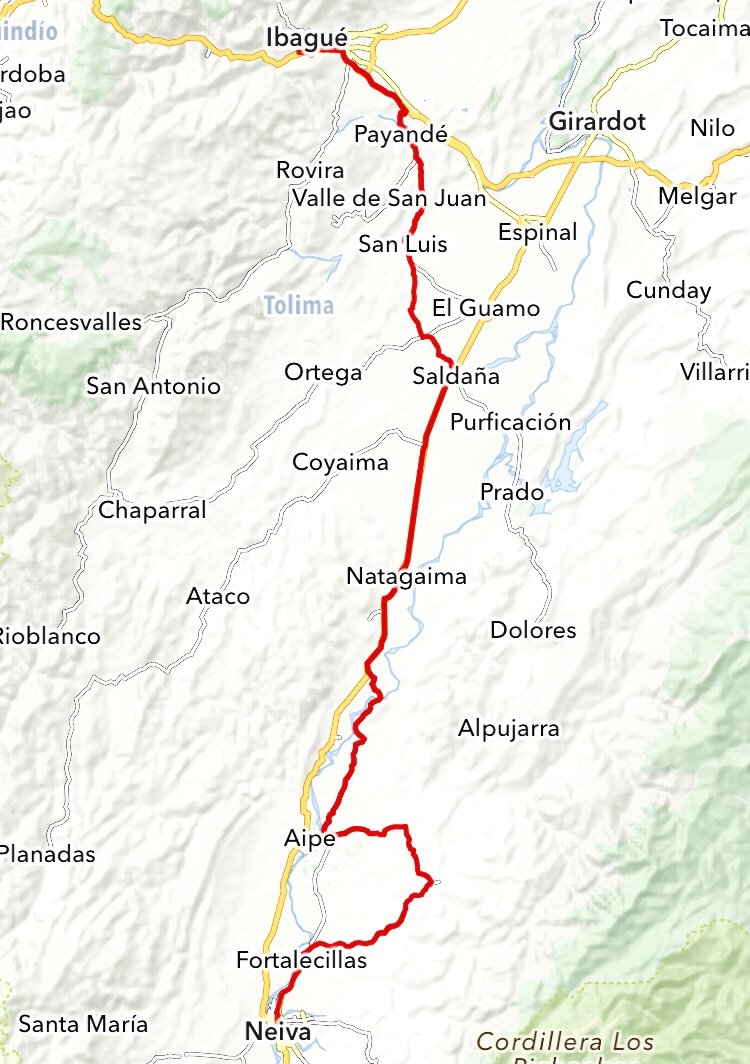 Leaving the outskirts of Ibagué we took the big highway for the morning before turning onto a smaller paved road. I’m not a fan of riding big highways, or paved roads in general, but this highway turned out to be a nice surprise. It was almost park like with its tree-lined shoulders and cut grass. There was even a two-lane bike path on the other side of the highway. Twenty-five kilometers, almost all downhill, flew by in under an hour.
Leaving the outskirts of Ibagué we took the big highway for the morning before turning onto a smaller paved road. I’m not a fan of riding big highways, or paved roads in general, but this highway turned out to be a nice surprise. It was almost park like with its tree-lined shoulders and cut grass. There was even a two-lane bike path on the other side of the highway. Twenty-five kilometers, almost all downhill, flew by in under an hour.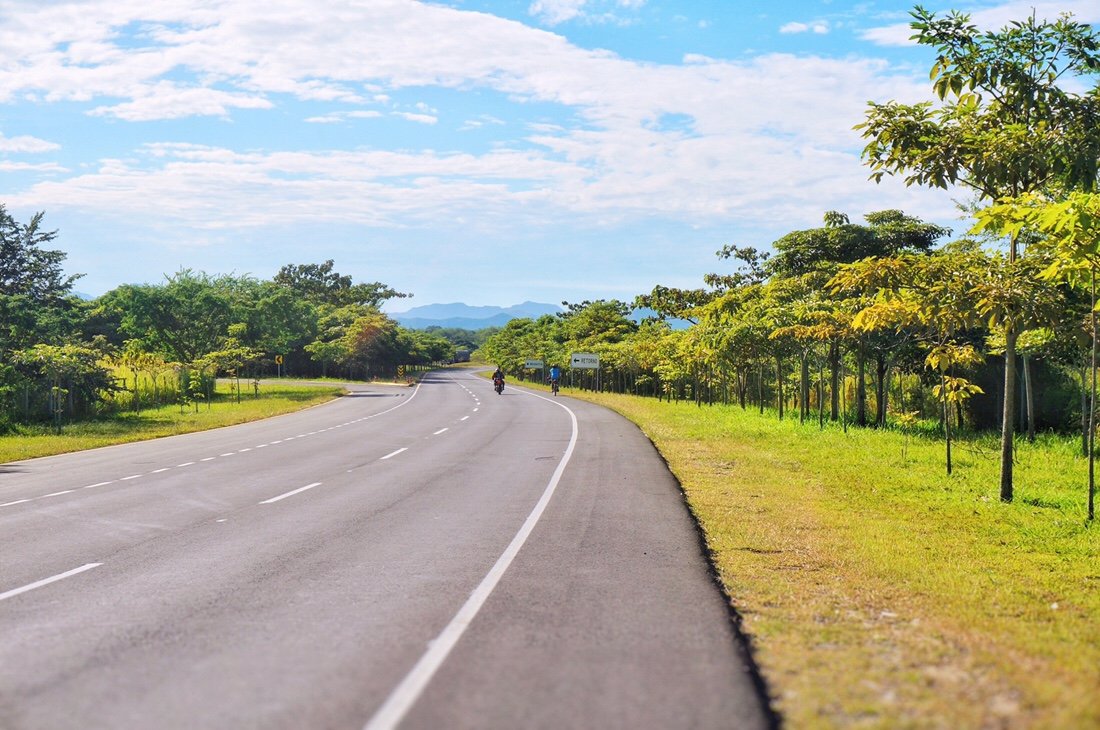 We turned onto a smaller paved road, passing through the small towns of Payandé, La Flor, and San Luis. We saw a lot of other cyclists through the morning hours. It must be a popular route for local riders. The little cafe in Payandé even had a big sign out front that says it's the "el descanso del ciclista" (the cyclist's rest).
We turned onto a smaller paved road, passing through the small towns of Payandé, La Flor, and San Luis. We saw a lot of other cyclists through the morning hours. It must be a popular route for local riders. The little cafe in Payandé even had a big sign out front that says it's the "el descanso del ciclista" (the cyclist's rest).
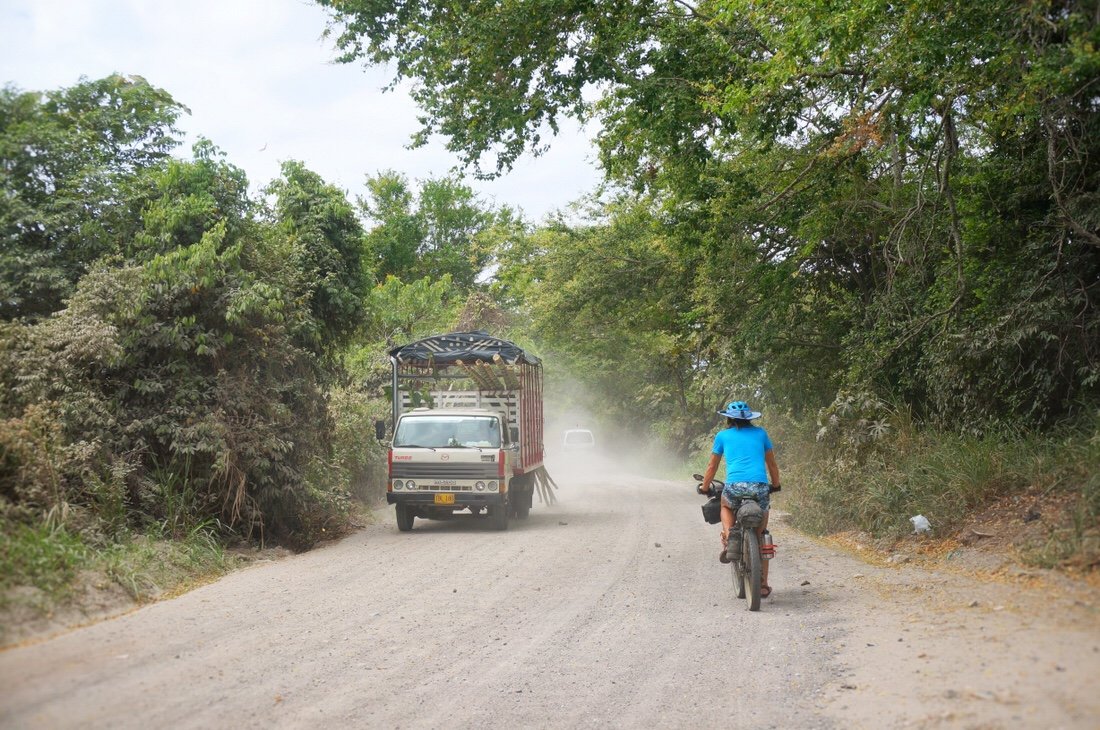 By midday we had already dropped quite a bit in elevation--the air was much hotter, and the landscape was slowly changing to a dry grassland interspersed with tropical vegetation, and dry rugged mountains at the edges of the valley. Shortly after San Luis we took a dirt road into Saldaña where we got a room for the night.
By midday we had already dropped quite a bit in elevation--the air was much hotter, and the landscape was slowly changing to a dry grassland interspersed with tropical vegetation, and dry rugged mountains at the edges of the valley. Shortly after San Luis we took a dirt road into Saldaña where we got a room for the night.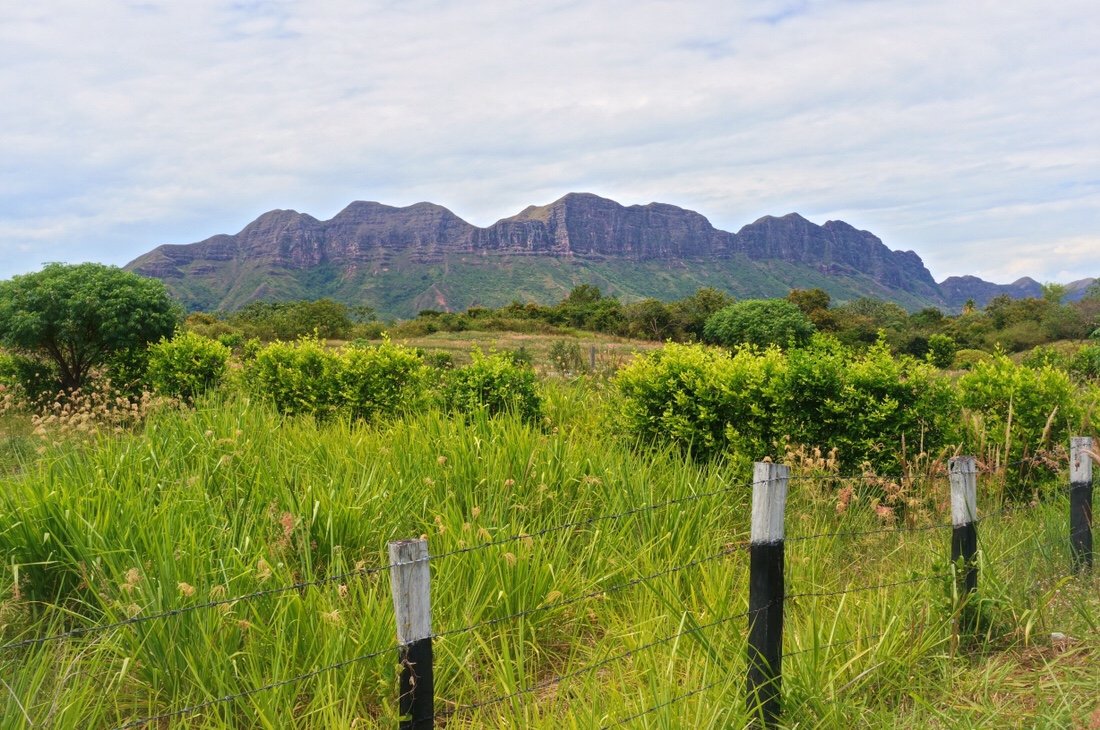
 We had planned to make it to the outskirts of the Tatacoa Desert the next day, but after stopping on the side of the road for lunch Neon's tire decided it no longer wanted to hold air. It seemed to be leaking from the valve stem, or the spokes, or both. After a few road side repairs, with no success, we walked the bike back to the small town of Natagaima and got a room for the night. Thankfully Neon had a roll of "gorilla tape" with him and was able to replace the rim tape on his rear wheel, which had rumpled up and come loose (probably because the rim tape was reused off a previous rim that had gotten bent, that he eventually had replaced in Toluca, Mexico).
We had planned to make it to the outskirts of the Tatacoa Desert the next day, but after stopping on the side of the road for lunch Neon's tire decided it no longer wanted to hold air. It seemed to be leaking from the valve stem, or the spokes, or both. After a few road side repairs, with no success, we walked the bike back to the small town of Natagaima and got a room for the night. Thankfully Neon had a roll of "gorilla tape" with him and was able to replace the rim tape on his rear wheel, which had rumpled up and come loose (probably because the rim tape was reused off a previous rim that had gotten bent, that he eventually had replaced in Toluca, Mexico). The landscaped became even more arid after Natagaima. We passed large expanses planted with cotton. It was all very familiar to me, similar enough that I could have been riding somewhere back home in Arizona.
The landscaped became even more arid after Natagaima. We passed large expanses planted with cotton. It was all very familiar to me, similar enough that I could have been riding somewhere back home in Arizona.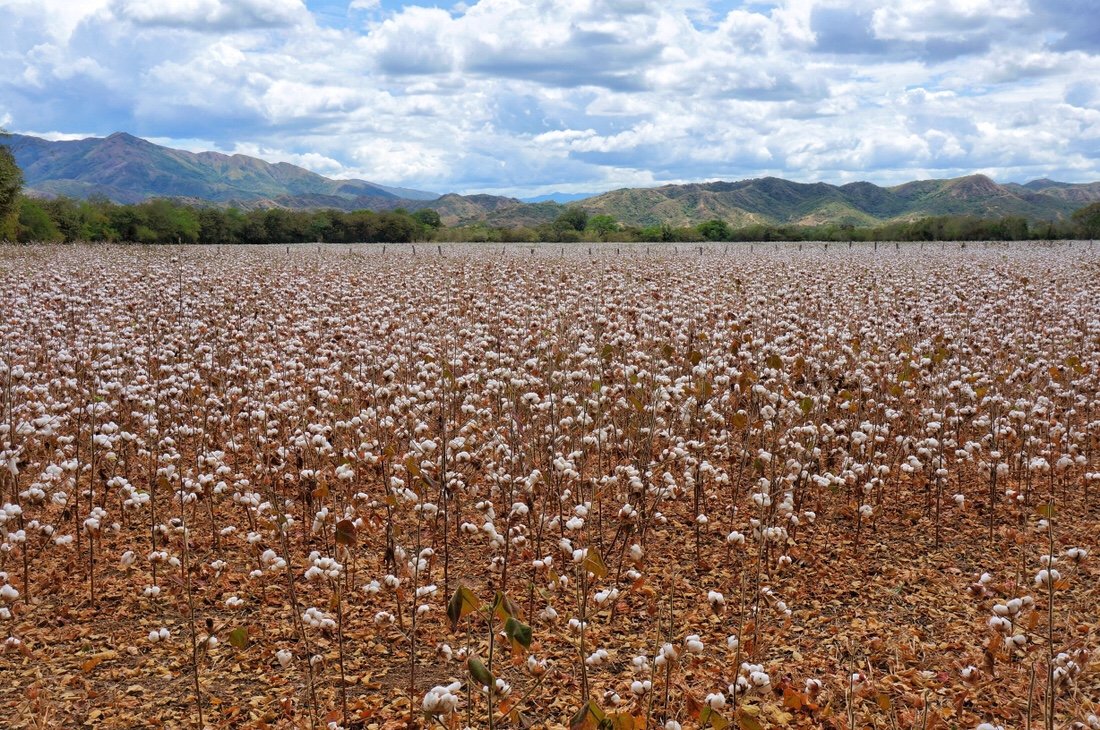 Later in the morning hours we turned onto a small dirt road, near Pueblo Nuevo, marked with a big sign that read "ruta el desierto de la tatacoa", though we were still on the outskirts of the main desert area.
Later in the morning hours we turned onto a small dirt road, near Pueblo Nuevo, marked with a big sign that read "ruta el desierto de la tatacoa", though we were still on the outskirts of the main desert area. The road winds around through farmland and ranches, crossing several small creeks, before crossing the Rio Magdalena on an old train route, passing through a couple of tunnels along the way.
The road winds around through farmland and ranches, crossing several small creeks, before crossing the Rio Magdalena on an old train route, passing through a couple of tunnels along the way.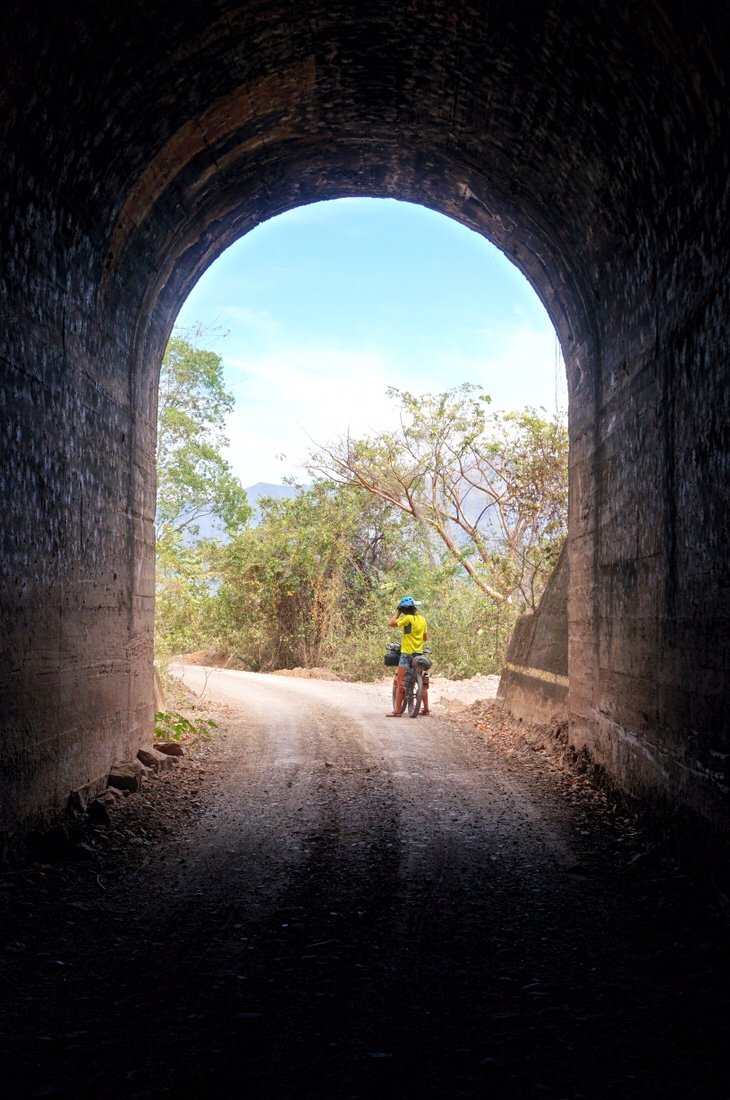

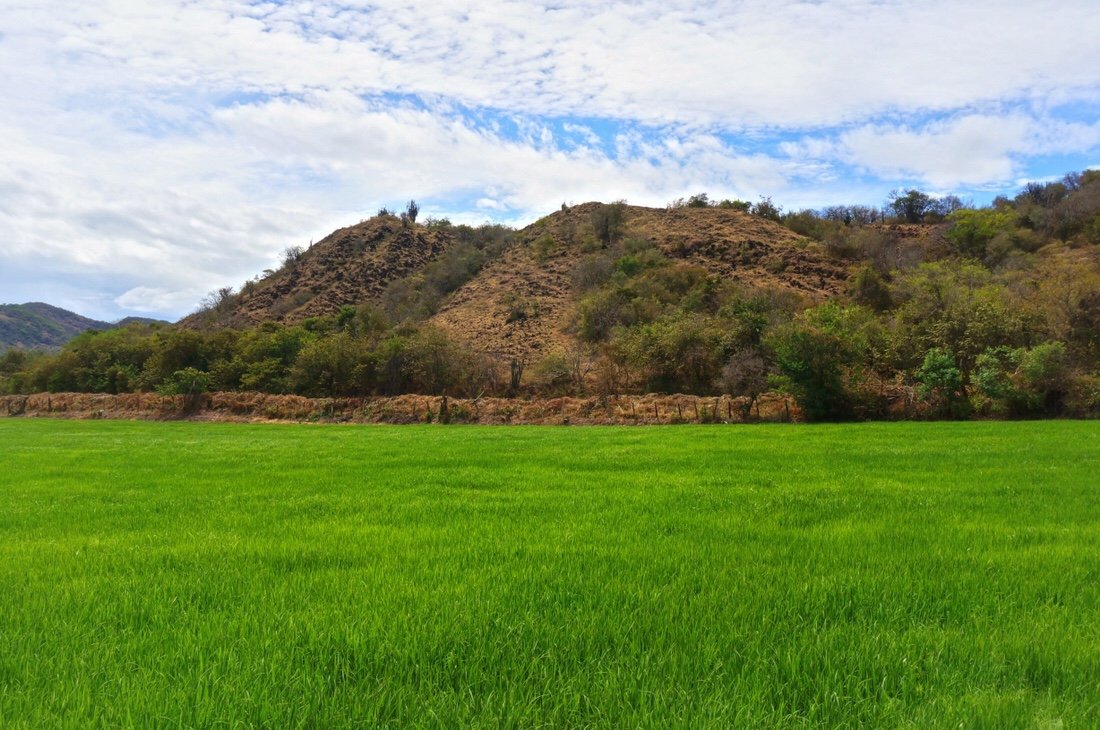 Despite the arid nature of the surrounding ridges and hills, there seems to be enough water locally to support growing rice, bananas, and other crops that I think of as being in a tropical landscape. The road continues on an old railroad grade, lined with tall arching trees, passing through Potosí and La Victoria, both receiving enough passerby's to support several very small tiendas, restaurants, and panaderias. La Victoria even had a couple of signs for hostels.
Despite the arid nature of the surrounding ridges and hills, there seems to be enough water locally to support growing rice, bananas, and other crops that I think of as being in a tropical landscape. The road continues on an old railroad grade, lined with tall arching trees, passing through Potosí and La Victoria, both receiving enough passerby's to support several very small tiendas, restaurants, and panaderias. La Victoria even had a couple of signs for hostels.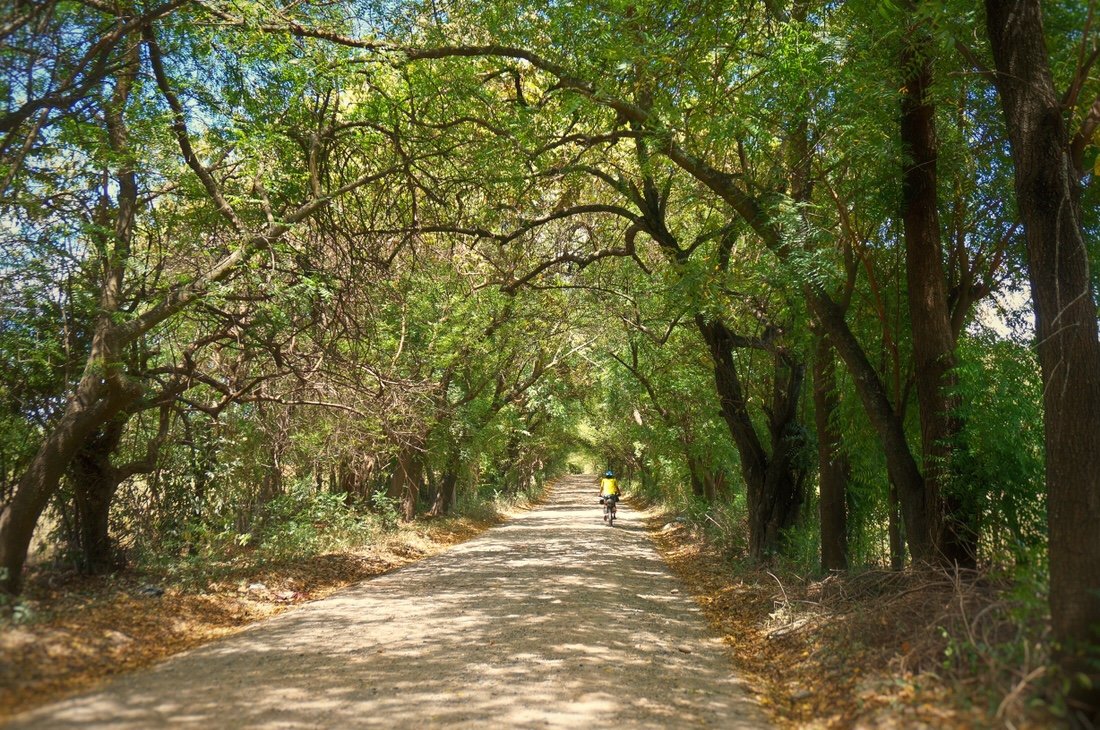 Shortly before Villavieja the landscape becomes even more arid and we passed another road that turned east into the Tatacoa Desert. In retrospect that road may have been a better route for us, possibly being less touristy than the main road out of Villavieja that we took east across the desert.We stopped in Villavieja for more supplies before heading into Tatacoa. It was a bit of a surprise how many people and tour buses there were, compared to the tiny quiet dirt road we had arrived on. I think it was at this point that we wished we had done a bit more research and planned better, with more supplies, so that we could have taken the other road to cross the Tatacoa (which might be less touristy than the main road), but it was still a stunning landscape nonetheless.
Shortly before Villavieja the landscape becomes even more arid and we passed another road that turned east into the Tatacoa Desert. In retrospect that road may have been a better route for us, possibly being less touristy than the main road out of Villavieja that we took east across the desert.We stopped in Villavieja for more supplies before heading into Tatacoa. It was a bit of a surprise how many people and tour buses there were, compared to the tiny quiet dirt road we had arrived on. I think it was at this point that we wished we had done a bit more research and planned better, with more supplies, so that we could have taken the other road to cross the Tatacoa (which might be less touristy than the main road), but it was still a stunning landscape nonetheless.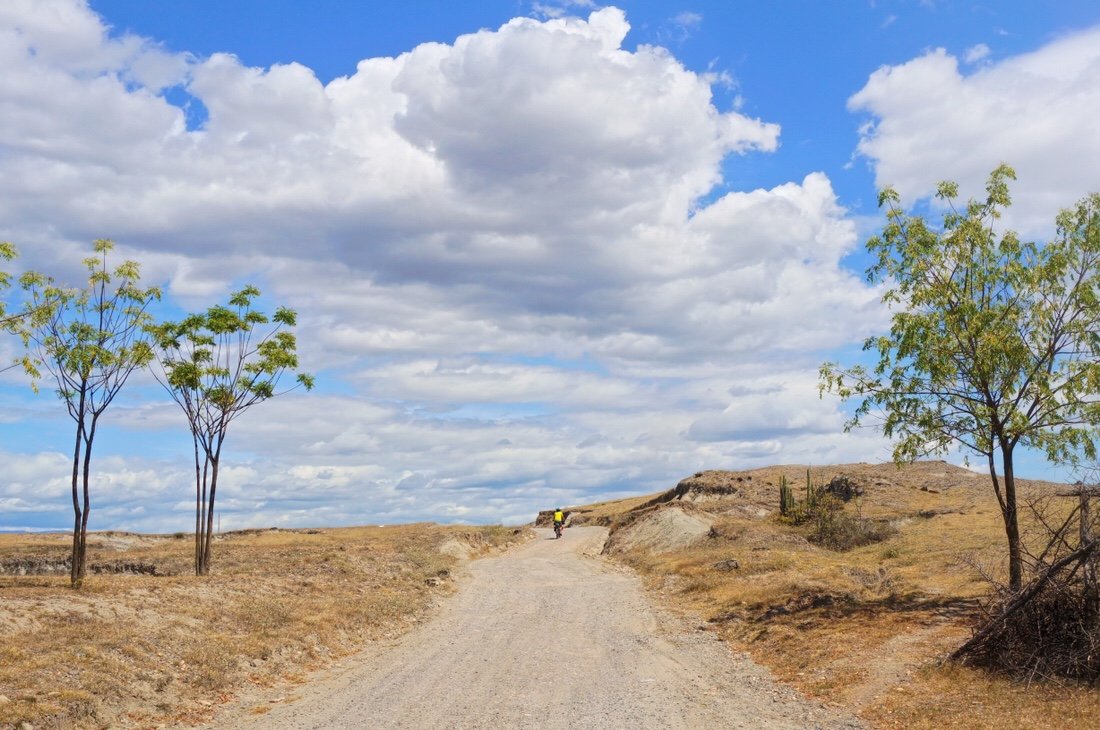
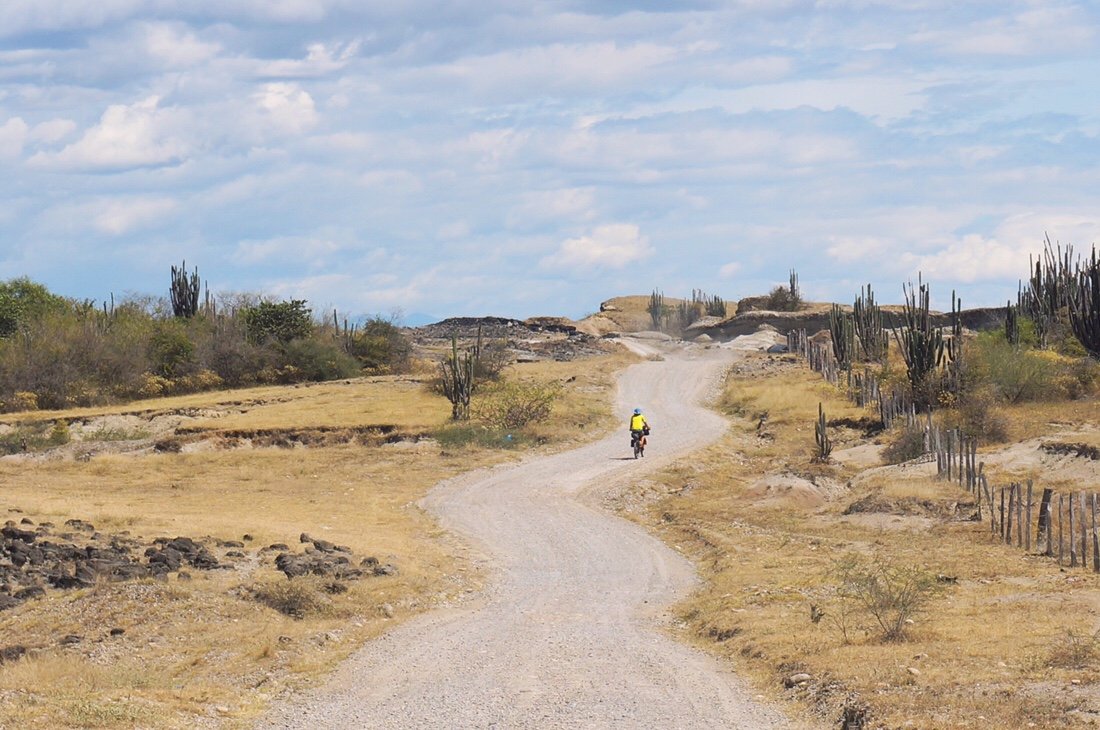
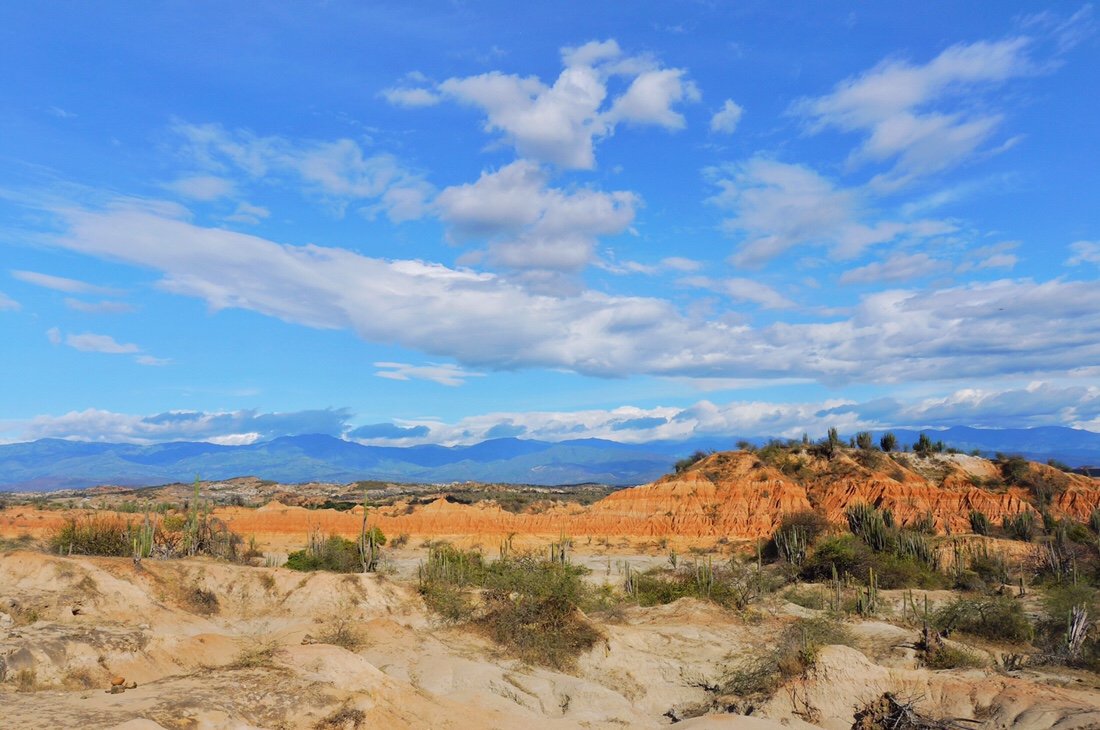 I realize now, looking at my photos, that they give the impression of a completely deserted desert, and for the most part it was, except for along the main road. If you look closely in the photo below you can see a few hikers, but most folks stuck close to road, taking selfies with the desert in the background, not straying too far from the restaurants and hostels. It was actually quite a sweet spectacle, reminiscent of a scene from the south rim of Grand Canyon in the U.S., except here in Tatacoa it was primarily Colombian tourists out enjoying their homeland, rather than international tourists.
I realize now, looking at my photos, that they give the impression of a completely deserted desert, and for the most part it was, except for along the main road. If you look closely in the photo below you can see a few hikers, but most folks stuck close to road, taking selfies with the desert in the background, not straying too far from the restaurants and hostels. It was actually quite a sweet spectacle, reminiscent of a scene from the south rim of Grand Canyon in the U.S., except here in Tatacoa it was primarily Colombian tourists out enjoying their homeland, rather than international tourists.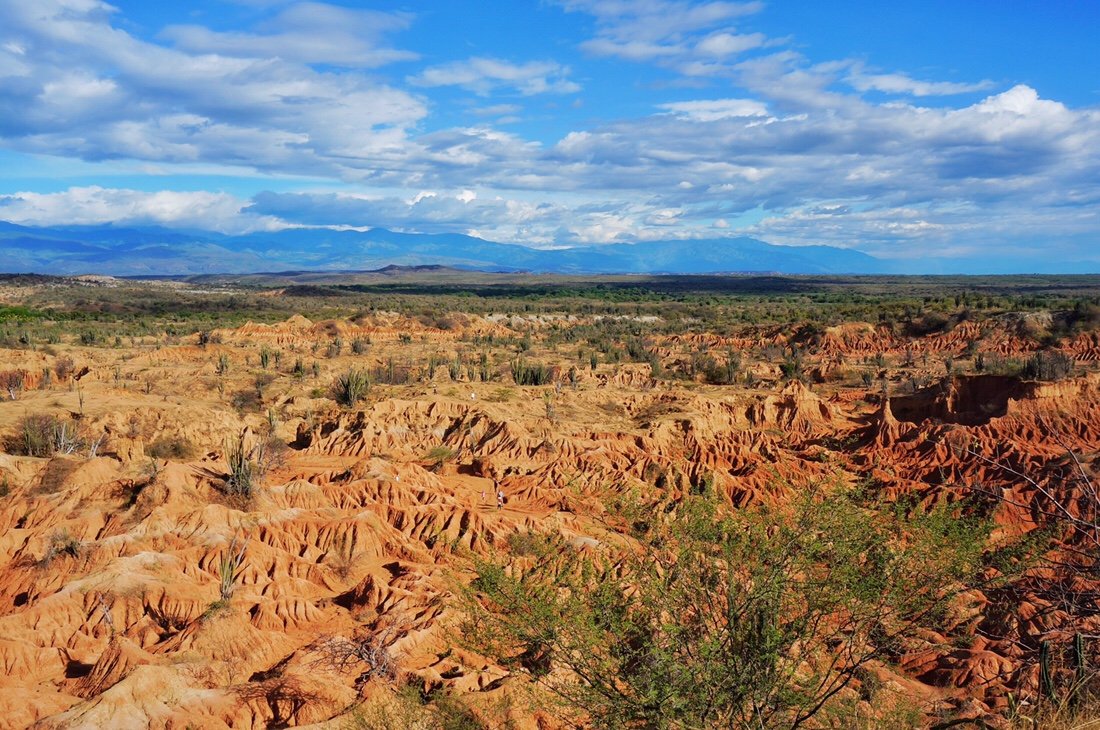 ...and our obligatory selfie with the desert in the background.
...and our obligatory selfie with the desert in the background. The Tatacoa Desert is actually quite small, and we had planned to wild camp at least once, if not twice, but it wasn't to be... Cutting our day short the previous day to deal with Neon's tire completely changed our timing through Tatacoa, and there was a big sign at the entrance explicitly forbidding camping outside of established businesses. If our timing, and knowledge of the area, had been a little different, stealth wild camping would have been possible before and after the main tourist area, or possibly from the other road through the Tatacoa.We continued a few kilometers past the main touristy area where we found a quiet hostel, a little off the main road, that offered camping. Camping was in a big open area, so we set up away from the main establishment near a few welcoming cactus and an old church building. It was the weekend, so we did share the sunset with a dozen or so other tourists, with music playing into the wee hours, but I slept perfectly sound, feeling almost like I was home again.
The Tatacoa Desert is actually quite small, and we had planned to wild camp at least once, if not twice, but it wasn't to be... Cutting our day short the previous day to deal with Neon's tire completely changed our timing through Tatacoa, and there was a big sign at the entrance explicitly forbidding camping outside of established businesses. If our timing, and knowledge of the area, had been a little different, stealth wild camping would have been possible before and after the main tourist area, or possibly from the other road through the Tatacoa.We continued a few kilometers past the main touristy area where we found a quiet hostel, a little off the main road, that offered camping. Camping was in a big open area, so we set up away from the main establishment near a few welcoming cactus and an old church building. It was the weekend, so we did share the sunset with a dozen or so other tourists, with music playing into the wee hours, but I slept perfectly sound, feeling almost like I was home again.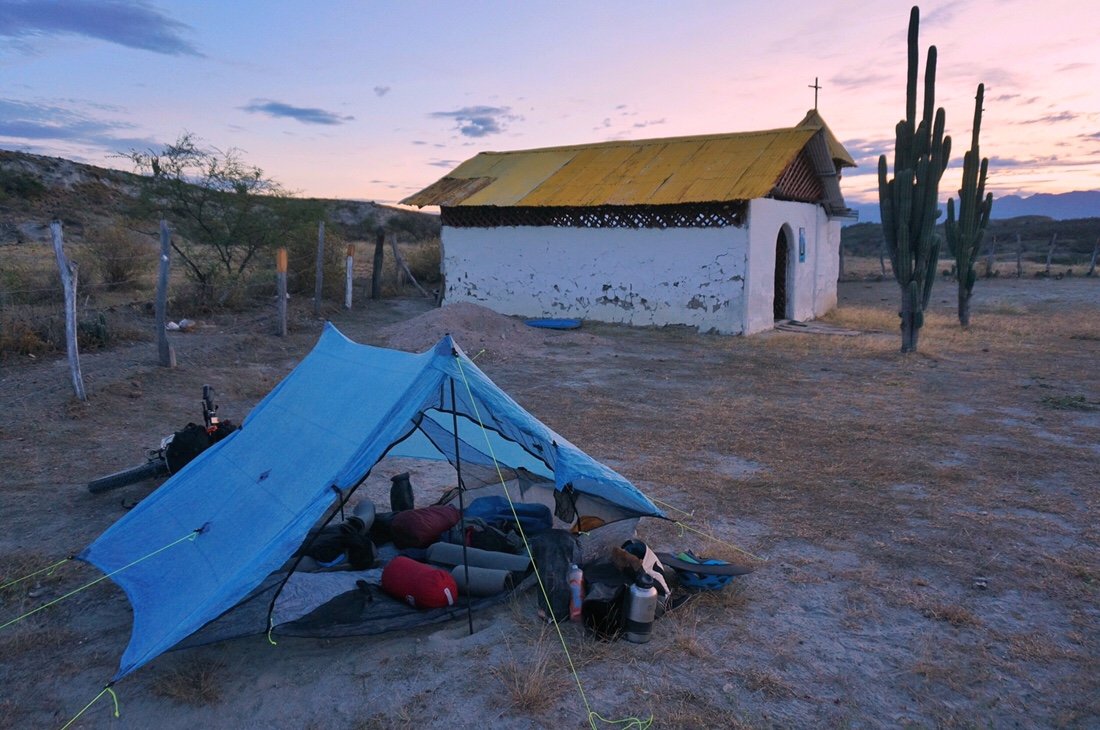

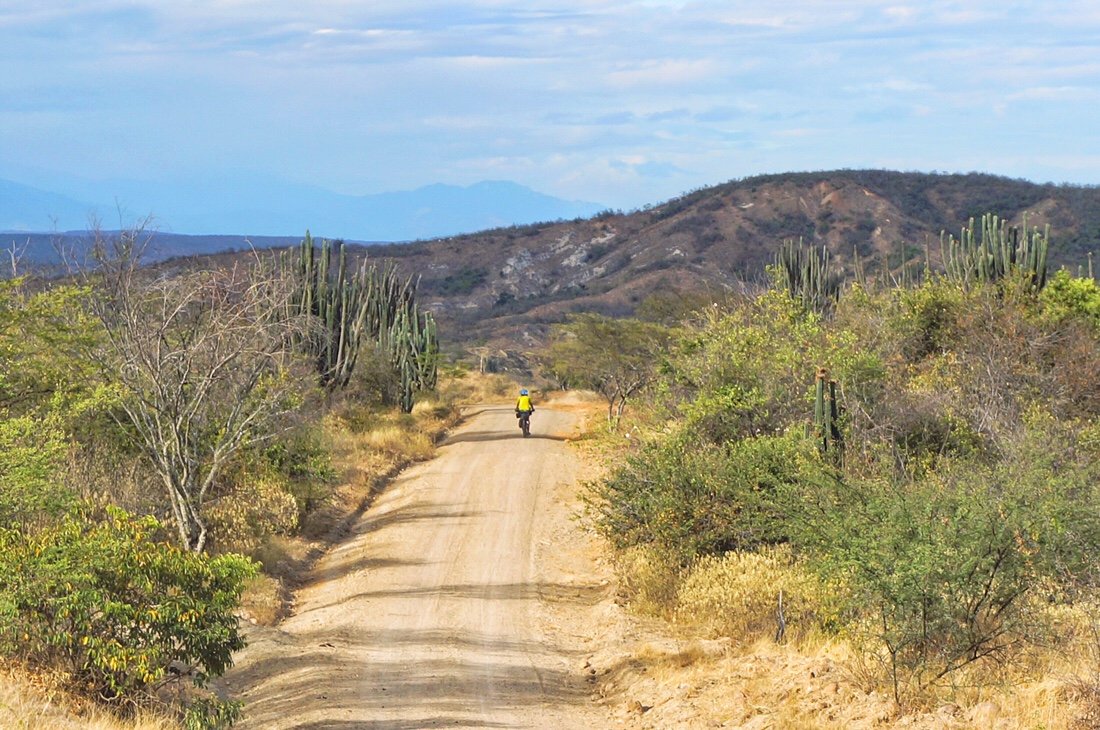 The ride out of Tatacoa alternated between blond sands and bright red sands contrasted by stormy gray-blue skies, making for surreal color palette in the morning light.
The ride out of Tatacoa alternated between blond sands and bright red sands contrasted by stormy gray-blue skies, making for surreal color palette in the morning light.

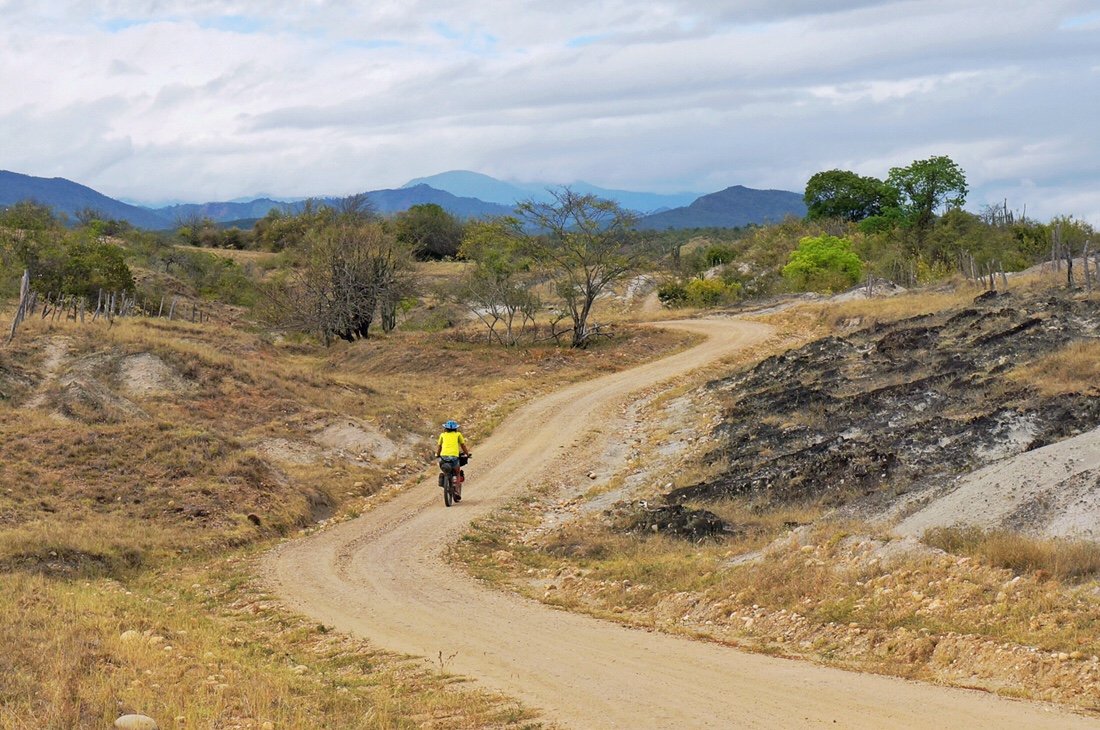 The landscape quickly shifted from desert to grassland to foresty overgrown jungle where the dirt road hit pavement at Baraya. The road was mostly paved all the way into Neiva, passing through several small towns along the way. The traffic got crazier the closer we got to Neiva, until we found our selves riding in a string of motorcyclists weaving their way in and between cars and trucks. I'm pretty sure the motorcyclists outnumbered the cars as we made our way to the center of town. It was a relief to check into a hotel, leaving the fast pace of traffic behind.
The landscape quickly shifted from desert to grassland to foresty overgrown jungle where the dirt road hit pavement at Baraya. The road was mostly paved all the way into Neiva, passing through several small towns along the way. The traffic got crazier the closer we got to Neiva, until we found our selves riding in a string of motorcyclists weaving their way in and between cars and trucks. I'm pretty sure the motorcyclists outnumbered the cars as we made our way to the center of town. It was a relief to check into a hotel, leaving the fast pace of traffic behind.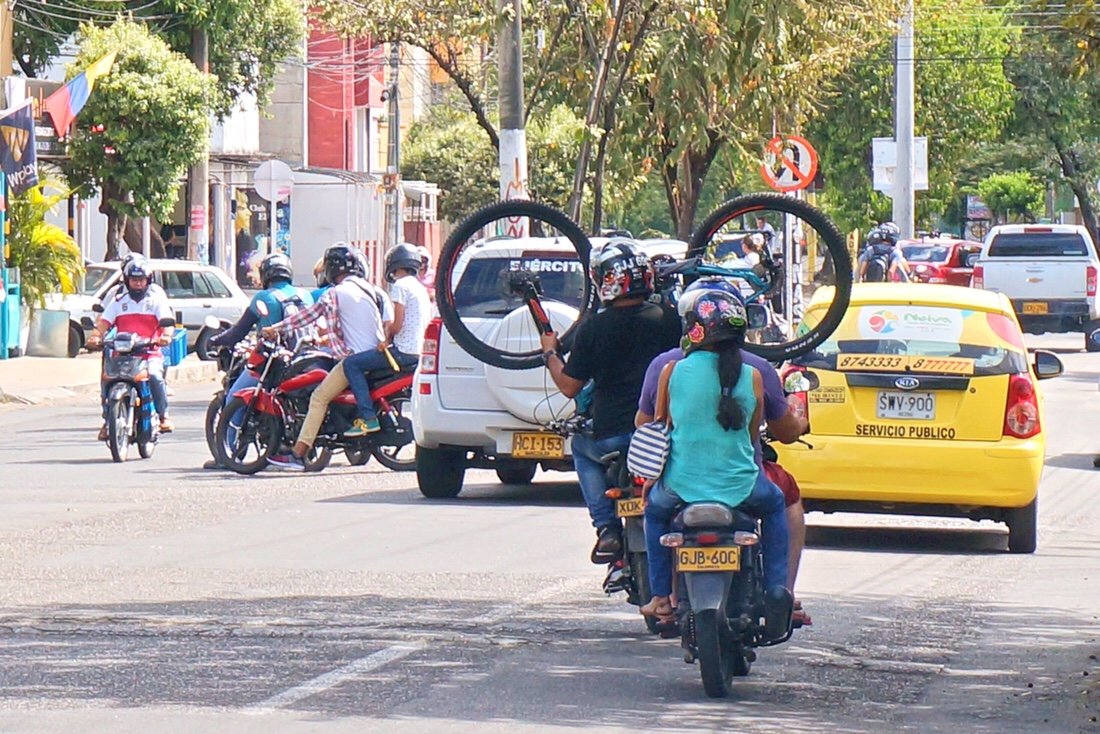
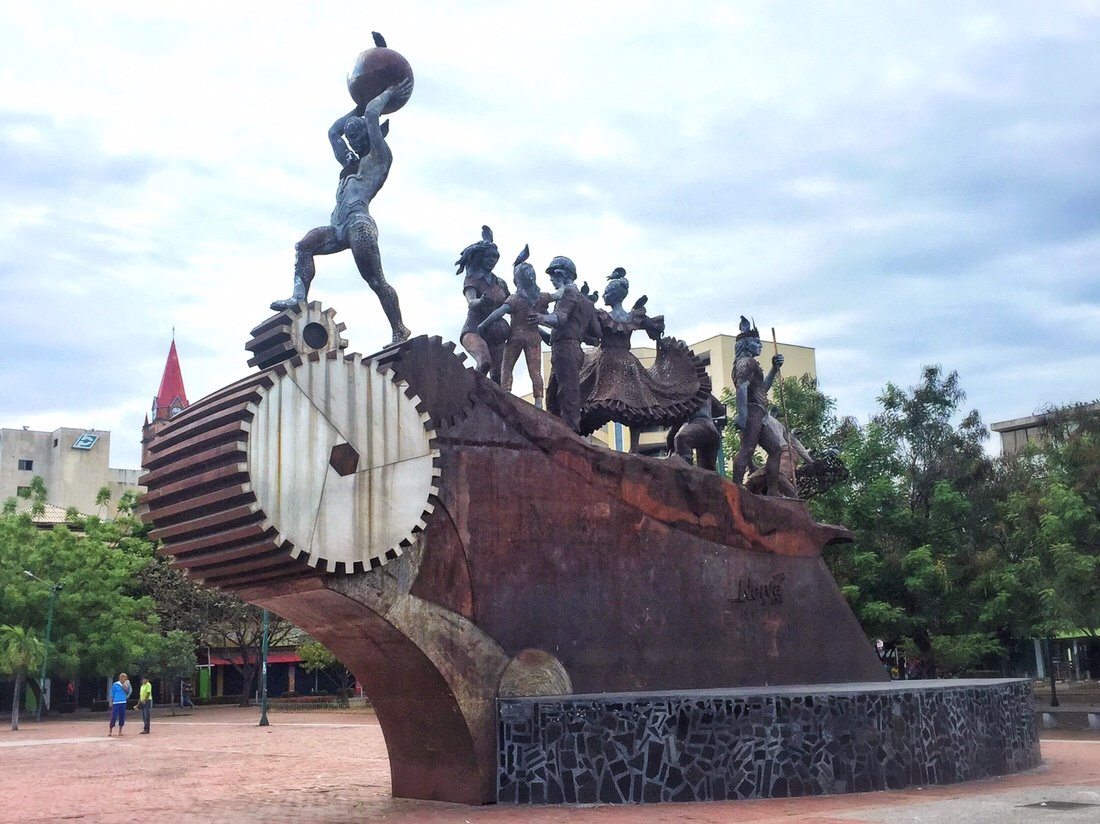
 We spent took a day off in Neiva, resting up, and visiting the local panaderias in search of the best cafe tinto.
We spent took a day off in Neiva, resting up, and visiting the local panaderias in search of the best cafe tinto.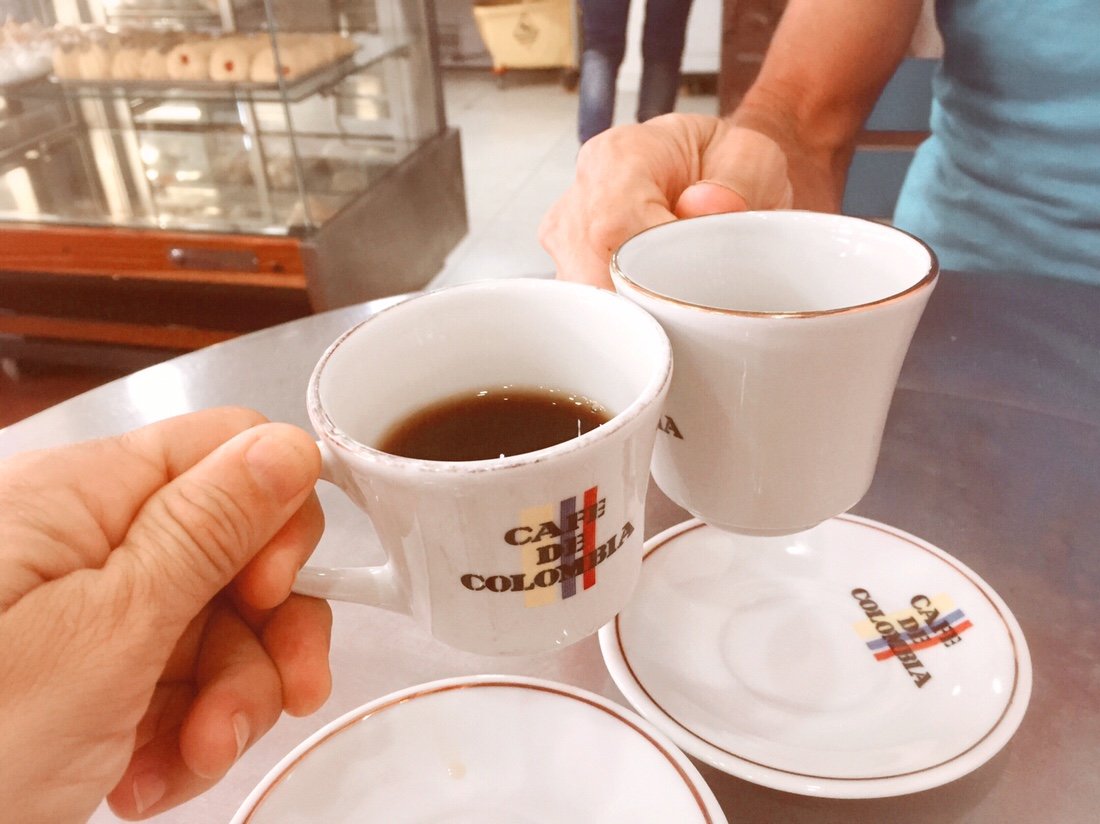 _____________________You can sign up to receive The Redheaded Nomad’s blog posts in your email inbox; sign up at the bottom of any page on my website: theredheadednomad.comFor more frequent updates, follow me on Instagram at: instagram.com/theredheadednomadYou can also find me on Facebook at: facebook.com/redheadednomad_____________________
_____________________You can sign up to receive The Redheaded Nomad’s blog posts in your email inbox; sign up at the bottom of any page on my website: theredheadednomad.comFor more frequent updates, follow me on Instagram at: instagram.com/theredheadednomadYou can also find me on Facebook at: facebook.com/redheadednomad_____________________

